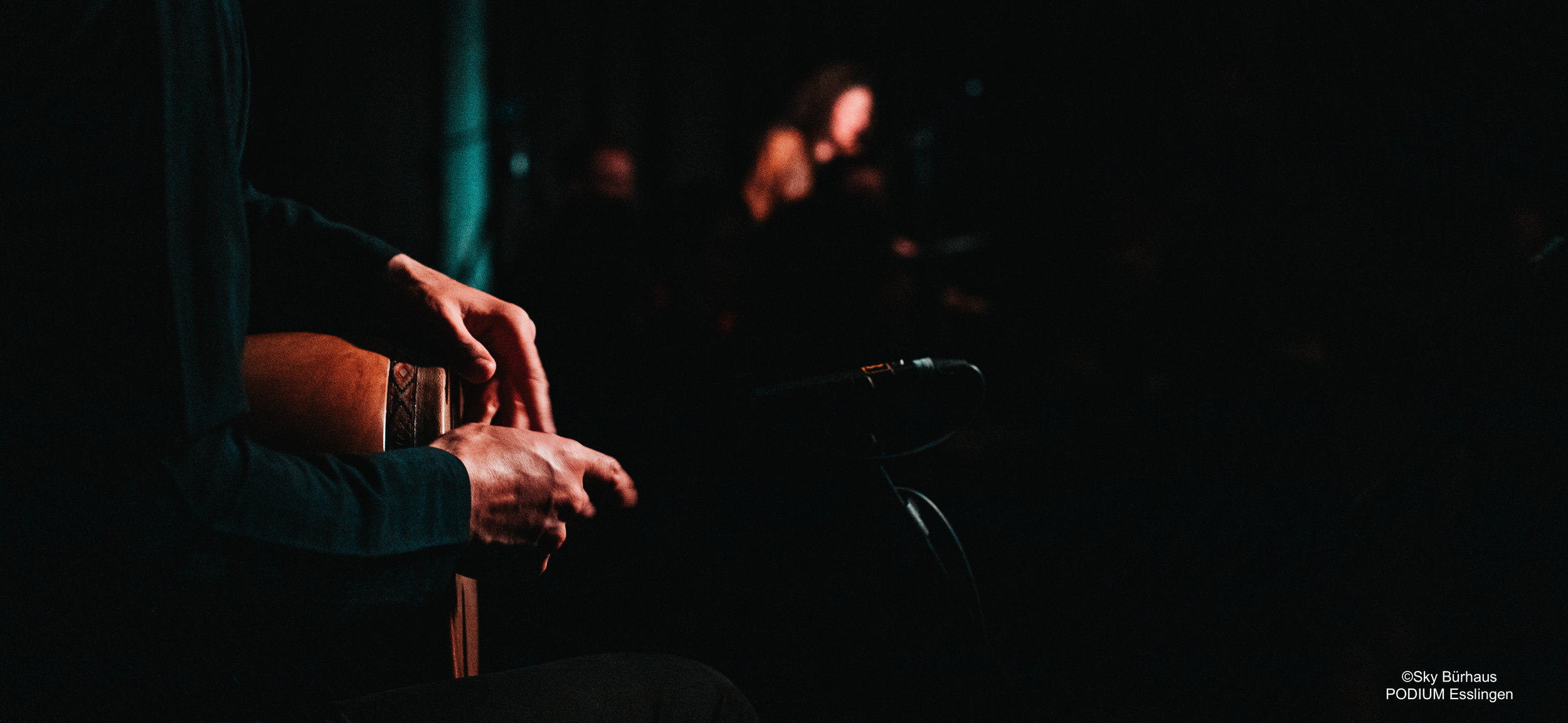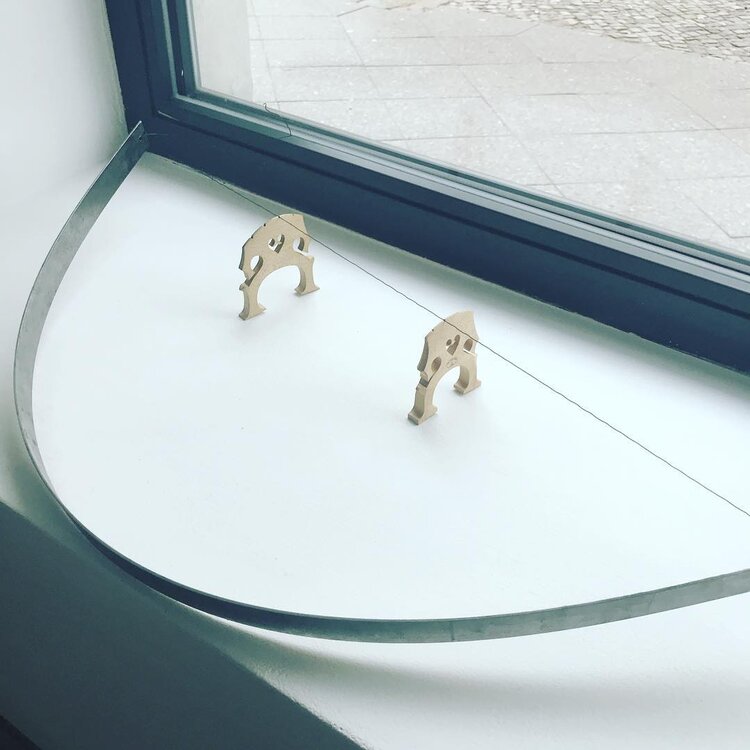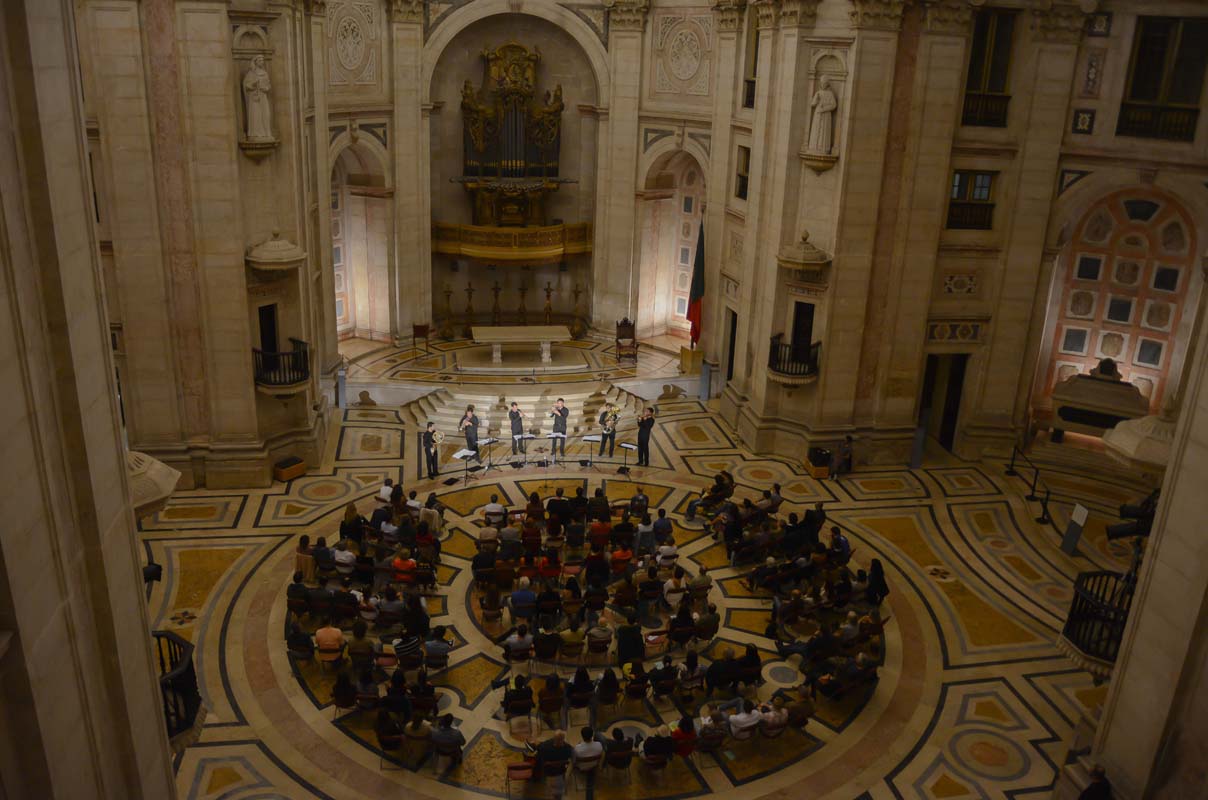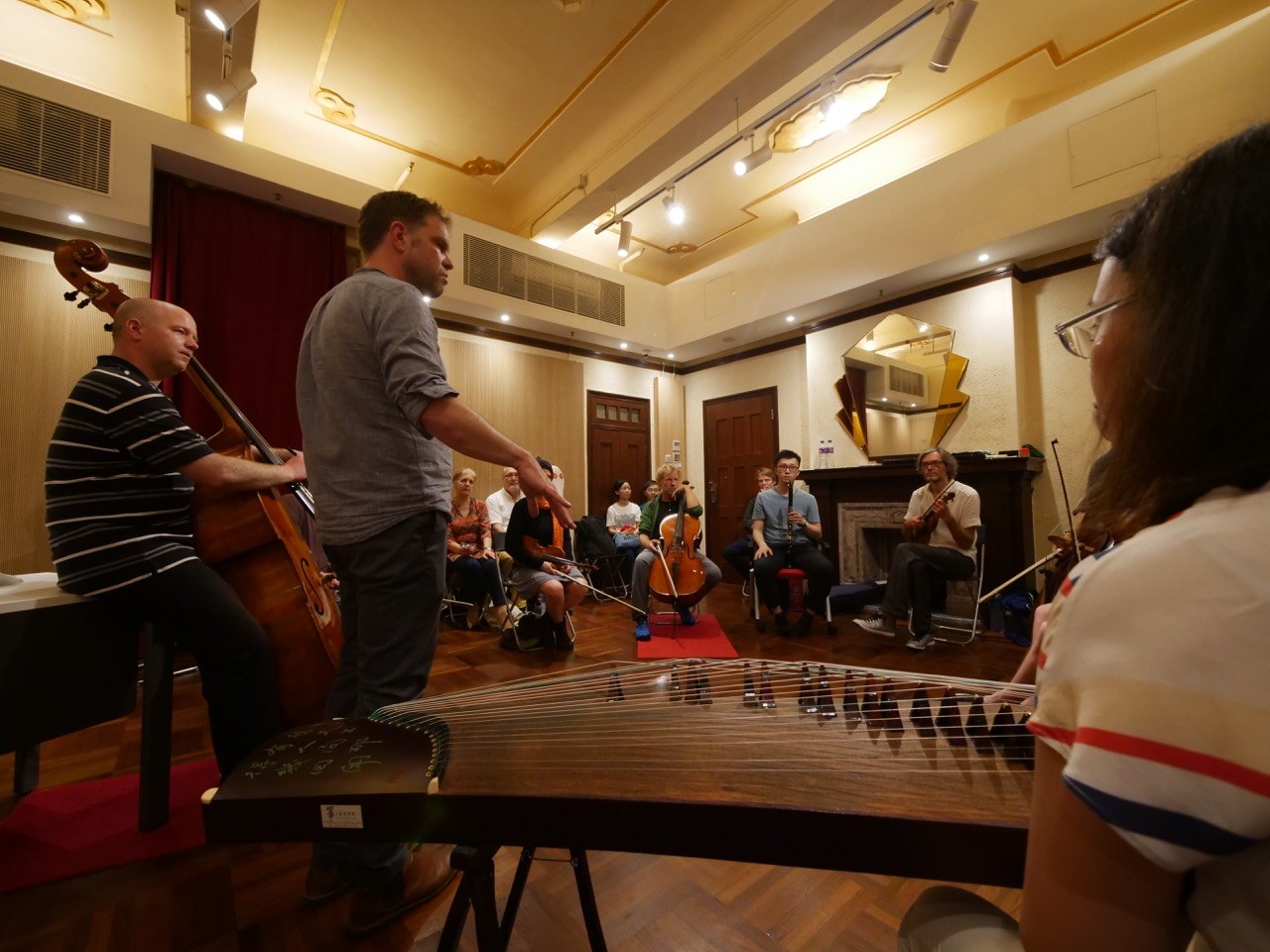Modul-ation
Notes from composer on his artistic practiceSimon James Phillips
collaborative composer
I am a classically trained pianist and conductor, and I had been working in this way for ten years professionally before I changed my direction. I love the repertoire, but I found my own spirit as a musician was limited. I also found it hard to be a part of this, because as a concert pianist you are often given a lot of work which I do not want to do. It is musically not interesting, it is a lot of work to practise and so on. I found it to be more interesting to be a creative pianist. I moved to Berlin in 2008, and to me this city has the most interesting and famous musical scene in Europe - experimental music and improvisation are easy to be found, and many supportive and active venues for the arts here. Berlin is also a very cheap city to live in, so I could afford to experiment with professional musicians.
I started improvising when I moved to Berlin. This place offered me flexibility to work with a number of ensembles and in different contexts like dance and theatre. I then moved into composition, and my first main composition was a collaborative composition where I came up with materials and the musicians composed together with me in rehearsals, similar to what we were doing in Contain. Since then, I have built a number of works with different types of compositional methods, ranging from really collaborative to through-composed works. Now I am working mostly as a composer. I still play the piano, and I also work in the art world with installations.
Outernational - improvisation and folk music

Here is an example of work that I did back in 2019, and it was with four Persian musicians - percussionist, Tar (an instrument with a long neck) player, clarinettist, and a singer. I was using electronics to diffuse some of the sounds that they were making, and I was combining it with field recordings. The Persian musicians were from different background: one was classically trained in Persian music, and others came from more of a folk background. It was an interesting project in many ways for me. I am not Persian and I do not feel comfortable in composing Persian music, but I was asked by the Tar player to do this project. The collaboration involved me collecting information from them, reading a lot about Persian art, and collecting ideas from the musicians. It was more than me pasting together a collage. Each musician was placed in a corner of an intimate performance space with the audience seated on stools between the musicians. Often what happened was that a musician would be playing and other musicians would be playing something else and that created a sense of complexity. It was an unique way of working.
Website reference
pent - (5 gleans) - modular composition
The next project that I want to talk about was from 2020. It was with a new music ensemble in Berlin and I was a part of the concert programme that they curated. The concert featured compositions that were commissioned in Berlin. The programme included Morton Feldman, Webern, Stefan Wolpe, Ursula Mamlok. I have never really composed. Generally my pieces are very long, and my pieces are the whole or half of the programme. Being in a smaller programme like this was unusual to me. This work for this ensemble shared a similar idea with what I did here in Contain – a modular composition. I do not like the top-down approach which the composer gets to decide everything for the musicians. I want to have some interactions between myself and the musicians, and to pass on and share information among us.
In this collaboration, we discussed this idea and I took materials from each of the other pieces in this programme, whether it was a motif, a harmonic material, or even a conceptional material, and I created a module for each piece for the musicians to build their own performance using these modules. They could have the modules side by side, they could layer the modules, or they could play one module at a time. Each module should be able to work in its own way. It was a very interesting concert. It was very different from the concert with the Persian ensemble because the musical way of working was different, and I prepared a lot of notated materials for this one. Their way of working as classical musicians was very different: they have the scores and they interpret the scores. This factor made this project challenging – you had to activate the musicians’ imagination and to hand over the control to them. The other thing that I found a bit challenging was the way how the rehearsal was set up - usually classical musicians take the score and they have three hours to get it ready before the concert. However creative works like this often take much longer and we are less certain about the direction. As a composer, I think the working process is the focus and more interesting than the end result.
Website reference
Greenery - collaboration with installation

This is a collaborative project with a sculptor called David Adamo. He provided objects, some homemade instruments and some sculptures, and they were mostly activated by the musicians. Not having musical instruments was very liberating for everyone. I got some feedback from the audience - at first they felt it was like a sculpture exhibition, but then once we started activating the sculptures, people said they started looking around and wondering what was happening in the space. It explored the idea of new materialism, and it reminded us that objects we see daily actually play a big role in our perceptions and our lives.
Website reference
Public People - exploration of institutions, dialectic relations and social context
I was a part of an improvising orchestra called the Splitter Orchestra here in Berlin. In this project, we joined with another ensemble, the Ensemble Mosaik, which is also a Berlin-based new music ensemble. Everyone involved was a musician-composer. It was interesting because everyone had an opinion and had their own way of doing things, and of course not everyone liked what everyone else was doing, but we created a way of working where we managed to make room for everyone. The creative process was like a social experiment in the idea of dialogic sociology by Richard Sennett. With this idea in mind, you do not have to necessarily agree and have the same point of view; the aim is to understand each other, and you allow each other to exist. I think it is more interesting to me in a philosophical way.
It was a very huge learning curve for every one involved. I know a lot of composers do not work with materials but they work with conceptual ideas and they are very interested in notation, but every one in the Splitter Orchestra is an improviser. You saw them making a lot of noises and using lots of extended techniques. The idea of working on materials is very important to me, because it is not against the intellect.
Website reference
Perto do Ar - spiritual work with social context

This is the first piece that I composed back in 2014 with a brass sextet from a chamber orchestra in Lisbon, Portugal. I was commissioned to do this through a theatre, but it was performed in a large place called Panteão Nacional, a very significant building and it houses bodies of famous Portuguese figures and politicians. The date of the performance was 1st November, which was All Saints Day and also the anniversary of a huge earthquake which happened in 1755. It was the first time for me to explore this kind of work with classical musicians. We were rehearsing in a very big room with little resonance. The day before the concert we moved to the Panteão. The space produced a seven-second reverb, and so I had to quickly adjust musical details with the brass players. We were all a bit shocked - all the materials that we worked in the room didn’t work in the Panteão, but everyone adapted very quickly. I discovered very early on that the materials that I want to work on with the musicians were very tricky for them. Although classical musicians sometimes are very eager to experiment and improvise, it is often the process that is more difficult than what they might expect. The performance still went pretty well as it developed. The piece was not notated.
Website reference
Contain - modular collaborative composition, interdisciplinary collaboration and questions about shifting cultural identities

It is a shared project with two ensembles - the Ensemble Resonanz in Hamburg and the Hong Kong New Music Ensemble in Hong Kong. My origianl idea was to involve musicians in a creative process: we came up with ideas together and we created modules. In a performance situation, the musicians took control of the modules themselves, you do not need a conductor and I do not give too many instructions. I was hoping to dilute my role as a controlling composer and move towards a role as an initiator or facilitator of a process which may help musicians develop their ways of playing, and not to dictate the process.
In the workshops, sometimes the process was led by a musician but sometimes it came out of an accident. Things did not always work on the first try, but something new would spring out and we took hold of it. Cultural Modulation is a module inspired by Samson Young. Samson gave a talk about cultural appropriation and he mentioned a melody from Hong Kong when it was still a British colony - a British transcribed the melody and took it back to England, and later this new version made its way back to China and now it’s like the “national song”. This module happened when some Hong Kong musicians played a traditional tune, the European musicians started to play along, taking cliché and elements of the composition to make the music their own. Through messing around, I thought we could make this a module - from a piece of traditional music from Hong Kong to something that is unknown and messy, and then it becomes something else - possibly a European piece.
Since then, huge changes have occurred due to COVID and Hong Kong has gone through a lot, and we were unable to come to Hong Kong as a result. The two ensembles could not come together, and we were thinking how we could solve the problems - maybe to have one ensemble playing live, and the other ensemble also playing live but streamed, but then there is the problem of latency, time difference and so on. In one of our conversations, Samson mentioned a predictable algorithm in a project he was working on. I asked him if he would be interested in using this algorithm in this project, and the idea was that the algorithm would trigger the five modules for each ensemble but independently in the performance. One of the consequences of having this algorithm was an outside controlling mechanism. The ensembles would have no idea when the modules are being selected, and I would have no idea how the visual materials and recorded sound files would be triggered during the performance. We were trying all these in the rehearsals to make both ensembles adapt and to unify as a group. Also, I have asked the ensembles to create their own final module without my interference, as it would be more interesting for me to be out of the way and to be a facilitator of this creative process.
Website reference
Biography

Simon James Phillips is a musician whose creative approach activates alternative processes broadening the relational connections between musics, participants, heritages, and practises. He utilises transdisciplinary methodologies of collaboration and adaptation to question dominant approaches to artistic creation. Phillips produces immersive work that explores the perception of time and place through sound and spatialisation by building expansive sonic atmospheres and taking particular care to tailor his compositions to each context. He often incorporates methods of collaborative composition that invite creative contributions from musicians who shift the composer/performer relationship towards an initiator/creative-participant dynamic. The multi-faceted and flexible nature of his work facilitates a diversity of practises initiating a cross-fertilisation that informs his many creative projects.
Originally trained as a classical pianist, Phillips has worked as a pianist, cellist, conductor, composer and artist in the disciplines of new and experimental music, classical music, non-western musics, improvisation, electronic music, theatre, dance, performance, film, the visual arts and research.
He has composed for Ensemble Resonanz, Ensemble Mosaik, Berlin Splitter Orchester, Zafraan Ensemble, Ensemble Offspring, the Australian Art Orchestra, the Hong Kong New Music Ensemble, Musikkollegium Wintherthur, Theater Basel, Deutsches Theater, and recently a solo piece for Matthew McDonald, principal Doublebass of the Berlin Philharmonic. He is a founding member of Greenery, a multi-disciplinary collective initiated with sculptor David Adamo. Furthermore, he has performed or composed for the Approximation Festival (Düsseldorf), Audio Art (Krakow), Bend/Break Festival (Berlin), Borealis Festival (Bergen), Darmstädter Ferienkurse (Darmstadt), Huddersfield Contemporary Music Festival (Huddersfield), Jazzfest Berlin (Berlin), Maerzmusik (Berlin), and the Sydney International Festival of the Arts (Sydney).
Phillips’ time is equally divided between composition, performance and research. He is currently an artistic director and member of the Board of Trustees for the Gwaertler Stiftung, a Swiss foundation supporting the arts. He currently lives in Berlin, Germany.
https://www.simonjamesphillips.com/
